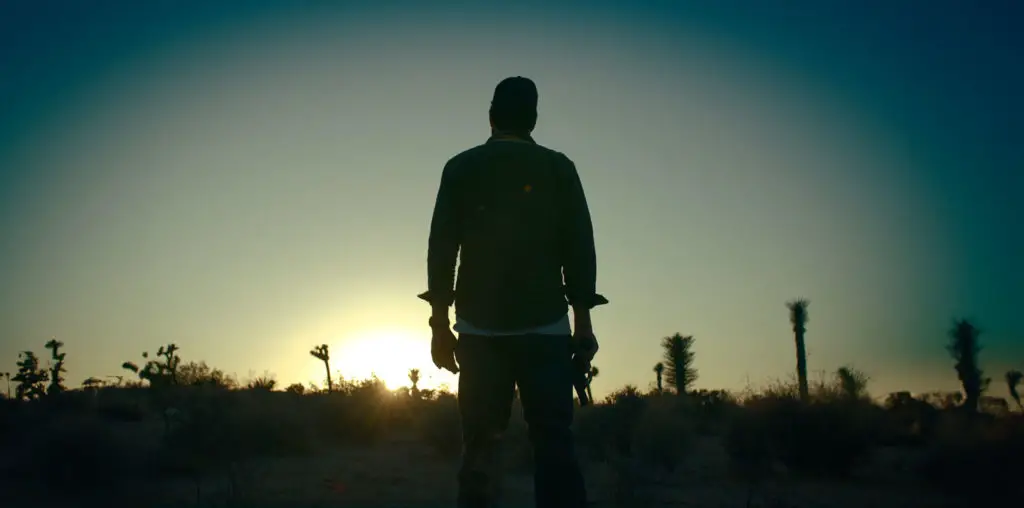
BOOTLEG FILES 274: “Gulliver’s Travels” (1939 animated feature film).
LAST SEEN: The film is available on the Internet.
AMERICAN HOME VIDEO: In public domain dupes.
REASON FOR BOOTLEG STATUS: An expired copyright.
CHANCES OF SEEING A COMMERCIAL DVD RELEASE: For once, I can recommend a proper commercial DVD offering with a fully-restored presentation.
I use this column to encourage people to seek out bootleg DVDs and unauthorized Net videos, but this week I am going to encourage everyone to check out a commercial DVD release: E1 Entertainment’s new presentation of the 1939 animated feature “Gulliver’s Travels.” Yes, there are tons of cheapo dupes floating around for this public domain title. However, the new DVD (and Blu-Ray copy, too) provides a long-overdue digital restoration of the film.
But this is not to say that “Gulliver’s Travels” is a great film. It isn’t. However, it occupies an important place in the development of animation and it deserves to be seen by anyone who is interested in the genre. And if you must see it, check out the best looking copy available.
“Gulliver’s Travels” was the result of the mistaken belief that Paramount Pictures could top Walt Disney as the leading source of Hollywood animation. In late 1937, Disney astounded the industry with the artistic and commercial success of his feature-length color animated version of “Snow White and the Seven Dwarfs.” Several studios looked into creating their own animated features, but only Paramount decided to challenge Disney at his game.
To achieve its goals, Paramount called on Max Fleischer, who ran the Fleischer Studios and produced shorts featuring Popeye the Sailor and Betty Boop. Paramount reportedly bankrolled its animated feature with $1 million. Money was no object, but time was – Paramount wanted to get its film created with all due speed. Fleischer expanded the size of his staff from 200 to 700 and relocated to a new studio in Florida to accommodate this project. (Florida was chosen because it was a right-to-work state and Fleischer had just come off a bruising effort to keep union organizers out of his studio.)
For this film’s source, Paramount and Fleischer tapped Jonathan Swift’s 18th century novel “Gulliver’s Travels.” This was a curious choice, since it was an adult book that used fantasy elements as a satire of British society of that distant era – and animation was still viewed as “family” entertainment. Rather than offer a faithful adaptation of Swift, Fleischer kept the first of Gulliver’s four adventures – his romp on the island of Lilliput – and jettisoned the other three adventures. This may have been sacrilege to Swift’s devotees, but at least Fleischer didn’t add insult to injury by following the original plan to cast Popeye as Gulliver.
However, it may have been better had Popeye turned up in the film. Fleischer’s Gulliver is actually one of the most disappointing creations in the history of animation. In fact, he’s barely active for the first half of the 77-minute film – Gulliver spends that period unconscious on the Lilliput beach after he is shipwrecked, and he never wakes up until he is delivered as a bound captive to the Lilliput town square. When he is awake, however, Gulliver is little more than a bemused observer on the silliness in Lilliput and its conflict with the neighboring kingdom of Blefuscu.
For the most part, “Gulliver’s Travels” is actually about the silly feud between King Little of Lilliput and King Bombo of Blefsuscu. The fat, childish monarchs sign a contract for Princess Glory of Lilliput to marry Prince David of Blefuscu. However, a disagreement on what song to perform at the wedding leads to King Bombo canceling the contract and declaring war on Lilliput.
Meanwhile, the squeaky-voiced town crier Gabby is making his evening rounds and discovers Gulliver washed up on the beach. To Gabby, Gulliver is a giant – of course, the people of Lilliput and Blefuscu are miniscule, so anything over seven inches seems gigantic. The Lilliputians tie up the unconscious Gulliver and transport him on a large wooden wagon to their town square. Gulliver awakes and easily snaps the ropes that bind him. After a brief conversation between Gulliver, King Little and Gabby, the Lilliputians are convinced that Gulliver is friendly. In fact, he is so friendly that he is able to scare off the Blefuscu military invasion of Lilliput and later force the warring kings to recognize the folly of their conflict and allow their children to wed.
With Gulliver acting as little more than a benign supporting character, much of the film’s focus is devoted to Gabby, the belligerent town crier. With his cranky personality and squeaky voice, Gabby is a highly irritating personality. Much of the humor surrounding him involves getting into some sort of physical predicament: he falls into deep puddle twice, gets trapped under Gulliver’s sleeping fingers, gets locked out on a terrace when the waking Gulliver scares the Lilliput population, gets imprisoned when a giant bell falls over him, gets tied up in a potato sack…you get the idea. It ain’t funny.
Realizing the comic central character wasn’t all that amusing, Fleischer added comedy relief with three Blefuscu spies who sneak around Lilliput. Two of the spies are tall, thin, hook-nosed characters and the third is a runt who looks too much like Gabby. The runt winds up getting smacked and bopped whenever he makes some grievous error that threatens to expose the spies’ chicanery. It ain’t funny, either.
There is also King Little, who is fat and speaks with a high-pitched voice. King Bombo shares the same characteristics. Both act like infantile ninnies. Nope, they aren’t funny, either.
The film’s love interest, Princess Glory and Prince David, aren’t supposed to be funny. But they don’t do much except moon over each other and sing booming romantic odes. Strangely, they are funny – for the wrong reasons, admittedly.
Fleischer required two years, 12 tons of paint and 39,000 pencils to create the film’s 639,000 celluloids and 115,000 composite scenes. To make Gulliver seem more human than the cartoonish wee folk in the film, Fleischer used rotoscoping (a process developed by his studio), with uncredited actor Sam Parker serving as the character’s body model (he also did the voice performance).
Paramount had the film ready for release by late 1939. Almost immediately, “Gulliver’s Travels” drew comparisons to “Snow White and the Seven Dwarfs” – and not favorable ones. Frank Nugent in the New York Times declared that “the film is so far beneath the level of Mr. Disney’s famous fantasy that, out of charity, we wish we did not have to make the comparisons demanded by professional responsibility. If it were only possible to soften the blow by suggesting that the second feature cartoon automatically loses the novelty-value of the first, we should be cushioning our typewriter with the excuse right now. But it is far more than novelty that ‘Gulliver’ lacks: it is the wit, the freshness, the gayety and sparkle, the subtlety, the characterization and, for that matter, the good drawing that are the trademarks of the Disney factory.”
Even Disney chimed in, allegedly claiming that “We can do better than that with our second-string animators.” However, the film turned a profit and earned Oscar nominations for its score and the song “Faithful Forever”; its novelty tune “It’s a Hap-Hap-Happy Day” also became a popular recording. Fleischer also revived Gabby for his own series of animated shorts. Paramount purchased the Fleischer Studios with the plan of making more features. However, their second endeavor, the 1941 “Mr. Bug Goes to Town,” was a commercial flop and Paramount shut down the Fleischer operation.
Paramount sold the rights to “Gulliver’s Travels” to U.M.&M., a television distributor, in 1956. However, U.M.& M. neglected to renew the film’s copyright when it expired. Due to that neglectful lapse, “Gulliver’s Travels” fell into the public domain. For many years, it was the subject of cruddy dupes.
Which brings us back to the new DVD release. For this offering, the entire film was digitally restored using the original 35mm source print. I must say that the results are visually astonishing – I don’t recall “Gulliver’s Travels” looking as sharp and classy as it does with this release. If you need to check out “Gulliver’s Travels,” please view it with this DVD version. Hopefully, this release will encourage other companies to seek out orphan films and rescue them from public domain hell with long-overdue restorations.
IMPORTANT NOTICE: The unauthorized duplication and distribution of copyright-protected material, either for crass commercial purposes or profit-free s***s and giggles, is not something that the entertainment industry appreciates. On occasion, law enforcement personnel boost their arrest quotas by collaring cheery cinephiles engaged in such activities. So if you are going to copy and distribute bootleg videos and DVDs, a word to the wise: don’t get caught. Oddly, the purchase and ownership of bootleg videos is perfectly legal. Go figure!

